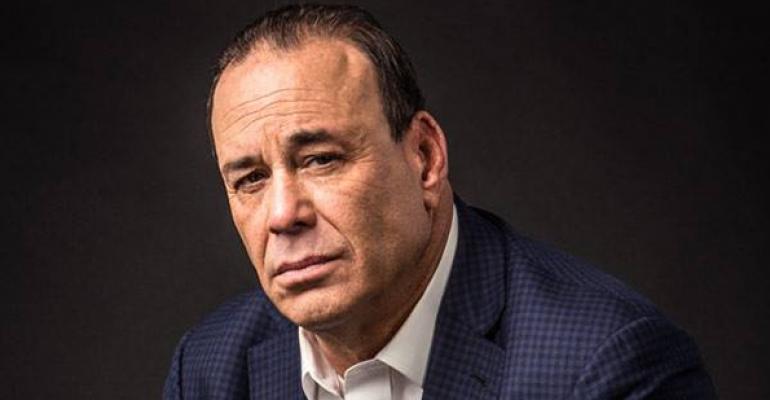Bar consultant Jon Taffer, executive producer and host of the Spike TV show “Bar Rescue,” has recently signed on with the National Restaurant Association to consult on BAR16, the alcohol-oriented trade show held May 22-23, at the same time as the NRA Show.
With more than 30 years of hands-on experience in bars and nightclubs, Taffer now consults with beverage companies, helps organize trade shows and otherwise remains in touch with bar trends from both the consumer and producer perspectives. In 2014 he also developed a bar and nightclub management app, BarHQ.
Taffer recently discussed alcoholic beverage trends with Nation’s Restaurant News.
What’s on the horizon for spirits in 2016?
You have to start with the word “bourbon.” Bourbon is the hottest spirit. In the past year we’ve seen it grow 20 percent or so with women, which is unheard of for a brown spirit. We’re seeing bourbon — small-batch bourbon, American bourbon, Kentucky bourbon — all exploding, and we’re going to see this year somewhat of a wave of celebrity–related bourbons: A number of celebrities are stepping into the bourbon marketplace with branded products and support programs. We’re [also] going to see an infusion of flavored bourbons.
You mean like Fireball [technically a cinnamon-flavored liqueur]?
Bingo. Yes, but we’re going to see black cherry [and other] variations, and we’re going to see a much greater market acceptance of these flavored bourbons and small-batch bourbon products. And we’re also going to see limited small-batch flavored products.
What about spirits other than bourbon?
We’re continuing to see rum slow a little bit as a category. The infusion of flavors with rums is not rooting quite as well as it is with some other spirits. Vodka’s going to continue to be a normal player, but I think — and there are a couple of companies banking on this — that the surprise of the next year is going to be Scotch. Scotch has not been a sector that has achieved a lot of mass positioning in the past few years, but a number of companies are putting a lot of emphasis behind Scotch this year.
Why do you think rum hasn’t taken off the way it might have? Is it because it’s trapped between vodka and whiskey?
Rum is a festive product. It’s used in more celebratory cocktails — your piña coladas, your mai tais. The flavored vodkas stepped on that space and eroded rum.
Vodka was that neutral spirit that fit in everything.
There was a bit of a tiki cocktail surge going on last summer, wasn’t there?
Yes, and again: rum — summer. That worked. The problem with rum is winter. It has a seasonal, festive element, and as much as that gives it its market position, it also limits it.
So someone needs to come up with a pumpkin spice mai tai for the winter.
Yeah. And also, rum brands backed off from on-premise promotions and mixology issues, and it hurt them, and as they were doing that all these flavored vodkas were entrenching themselves. And make no mistake: On-premise is where a lot of brand orientation and connections happen.
There’s also gin, which was a darling of mixologists. Do you see a lot of movement there?
I don’t. Gin is a less mixable product. That juniper flavor is very, very strong. It doesn’t apply to the many mixing opportunities that other spirits do. Gin is a purists’ spirit, in my view. People that drink gin are extremely loyal. I think it will maintain its position, but I don’t see a gin explosion coming.
What do you see happening with beer?
In full disclosure, I’ve got to tell you I’m a consultant to Anheuser-Busch.
Well, they do control half of the domestic beer market.
Their research, of course, is really phenomenal. And what I find is that core brands like Coors and Bud Light and Miller Light have taken a hit in the past few years to the craft brew explosion.
But now those core brands are starting to turn the corner. They’re holding their market position and starting to gain. I think the reason that’s happened is that craft beer was a really interesting and exciting thing until too many people got in the space, and now I suggest that about 30 percent of the craft beers out there, candidly, are just bad. Just because it says “craft beer” doesn't mean it’s good.
In the beginning, people with a passion for beer got into the business. They made great products. Now investors get into the space and the product isn’t as good. So I think there’s going to be a washout. I think the good products are going to survive. I think the craze will continue and the market [for craft beer] will continue, but I think we’re going to see far less brands in the space.
Correction: Feb. 16, 2016 An earlier version of this article misspelled Jon Taffer's first name in the headline.
Contact Bret Thorn at [email protected].
Follow him on Twitter: @foodwriterdiary





